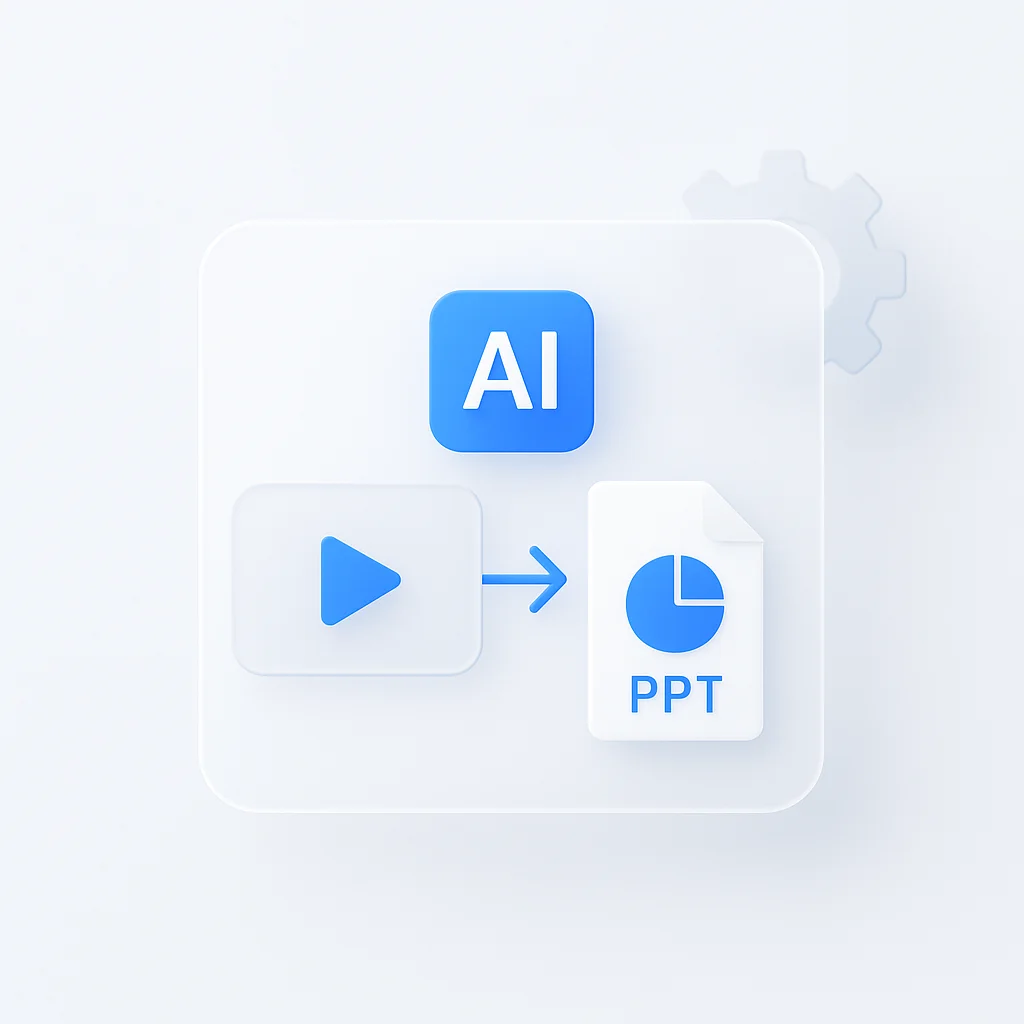En un mundo digital rebosante de interminables transmisiones de videos, encontrar ese clip esquivo puede sentirse como buscar una aguja en un pajar. Pero no temas, porque tenemos la solución definitiva para tus problemas de búsqueda de videos. ¡Dile adiós al desplazamiento interminable y saluda al poder de la búsqueda inversa de videos! Ya seas un creador de contenido, un espectador curioso o simplemente alguien a quien le encanta un buen desafío, tenemos los consejos y trucos que necesitas para dominar el arte de la búsqueda inversa de videos en línea. Así que abróchate el cinturón y prepárate para descubrir gemas ocultas, resolver misterios y sumergirte en un mundo completamente nuevo de exploración de videos.
Introducción
En nuestra era digital, donde se crea y comparte una gran cantidad de contenido cada segundo, encontrar videos específicos a veces puede sentirse como buscar una aguja en un pajar. Pero, ¿y si pudieras darle la vuelta al guion y dejar que la mano te encuentre a ti en su lugar? Entra en el mundo de la búsqueda inversa de videos: una tecnología revolucionaria que está remodelando la forma en que navegamos por los vastos mares del contenido en línea.
La búsqueda inversa de videos, como su nombre indica, es una tecnología que te permite encontrar videos relacionados o idénticos en línea utilizando un video o un fotograma de video como consulta de búsqueda, en lugar de las búsquedas tradicionales basadas en texto. Es una herramienta poderosa que puede ayudar a descubrir la fuente de un video, identificar duplicados o incluso encontrar contenido similar en toda la web.
Este artículo tiene como objetivo desmitificar la búsqueda inversa de videos y brindarte una guía práctica sobre cómo usarla de manera efectiva. Te guiaremos a través de procesos paso a paso para varias plataformas, compartiremos consejos y trucos internos para optimizar tus búsquedas y destacaremos casos de uso para ilustrar el poder y el potencial de esta innovadora herramienta. Ya seas un creador de contenido digital, un verificador de hechos diligente o un usuario curioso de Internet, esta guía te equipará con el conocimiento que necesitas para navegar por el mundo digital de manera más eficiente.
Entonces, ¡sumérgete en el fascinante reino de la búsqueda inversa de videos y desbloqueemos su potencial juntos!
Comprensión de la búsqueda inversa de videos
La búsqueda inversa de videos es una herramienta digital innovadora que utiliza un video o un fotograma de un video como consulta de búsqueda para localizar contenido idéntico o similar en Internet. Aprovecha algoritmos avanzados, a menudo impulsados por inteligencia artificial y aprendizaje automático, para analizar el video o el fotograma proporcionado y compararlo con el contenido de su base de datos.
En la era digital moderna, donde se carga una cantidad asombrosa de contenido de video cada minuto, la relevancia de las búsquedas inversas de videos no puede ser subestimada. Sirve para una variedad de propósitos, desde identificar la fuente de un video, desacreditar deep fakes y contenido manipulado, rastrear violaciones de derechos de autor e incluso encontrar videos visualmente similares para inspiración o investigación.
Beneficios de usar la búsqueda inversa de videos
La búsqueda inversa de videos aporta varios beneficios, lo que la convierte en una herramienta valiosa para los usuarios de Internet en todo un espectro de industrias e intereses. Estas son algunas de las ventajas clave:
- Verificación de contenido: Con la propagación de la desinformación y los videos manipulados, la búsqueda inversa de videos puede ayudar a verificar la autenticidad del contenido rastreándolo hasta su fuente. Esto es particularmente útil en el periodismo y los escenarios legales.
- Cumplimiento de los derechos de autor: Los creadores de contenido pueden utilizar la búsqueda inversa de videos para rastrear el uso no autorizado o las republicaciones de su trabajo, asegurando que sus derechos de autor sean respetados y cumplidos.
- Investigación de la competencia: Las empresas pueden monitorear el contenido de video de sus competidores para obtener información estratégica y mantenerse al día sobre las tendencias de la industria.
- Inspiración e ideas: Para las personas creativas, la búsqueda inversa de videos puede servir como fuente de inspiración. Al encontrar videos visualmente similares, se pueden recopilar ideas frescas para sus proyectos.
- Experiencia de usuario mejorada: Para los usuarios finales, la búsqueda inversa de videos puede mejorar en gran medida la experiencia de navegación al proporcionar recomendaciones de videos relevantes y personalizadas basadas en sus preferencias de visualización.
Comprender y aprovechar el poder de la búsqueda inversa de videos puede conducir a un uso más eficiente y efectivo de los recursos digitales, impulsando la innovación y garantizando la precisión de la información en nuestro mundo cada vez más interconectado.
Plataformas populares para la búsqueda inversa de videos
Actualmente, hay varias plataformas disponibles que ofrecen la capacidad de buscar videos de forma inversa. Estos servicios emplean una variedad de tecnologías para analizar y comparar videos, lo que hace que cada uno de ellos sea excepcionalmente adecuado para diferentes casos de uso. Echemos un vistazo más de cerca a algunas de las plataformas más populares:
Búsqueda de videos de Google:
- Google, el gigante tecnológico conocido por sus capacidades de búsqueda superiores, tiene una poderosa función de búsqueda de videos. Si bien es más conocido por las búsquedas inversas de imágenes, Google también proporciona una forma indirecta de buscar videos de forma inversa extrayendo y utilizando fotogramas clave como consultas de búsqueda de imágenes. La vasta base de datos y los algoritmos de búsqueda avanzados de Google la convierten en una herramienta confiable para la búsqueda inversa de videos.
Búsqueda de videos de Bing:
- Bing de Microsoft también ofrece una función de búsqueda de videos, que incluye la opción de realizar una búsqueda inversa de videos. La búsqueda visual de Bing es bastante sólida y se ha mejorado a lo largo de los años con tecnologías de aprendizaje automático e inteligencia artificial.
InVID/WeVerify:
- Originalmente diseñada como una herramienta para que los periodistas verifiquen la autenticidad del contenido de video generado por el usuario, InVID (ahora WeVerify) es un poderoso complemento de navegador que ofrece capacidades avanzadas de verificación de imágenes y videos.
Berify:
- Berify es un motor de búsqueda inversa que se especializa en rastrear todas las instancias de imágenes y videos en línea, lo que puede ser útil para el seguimiento y la protección de los derechos de autor. Berify no se limita a una fuente de información, sino que busca en múltiples bases de datos.
Si bien cada plataforma tiene sus fortalezas, la elección de la plataforma dependerá de tus necesidades específicas y de la naturaleza del contenido de video con el que estés tratando. Ya sea para uso personal, verificación de hechos periodísticos o creación de contenido profesional, cada una de estas plataformas ofrece un enfoque único para la búsqueda inversa de videos.
Guía paso a paso para usar la búsqueda inversa de videos
Aunque Google no ofrece una función de búsqueda inversa directa de video a video, puedes usar fotogramas clave de tu video para realizar una búsqueda inversa de imágenes. Así es cómo:
- Toma una captura de pantalla clara o selecciona un fotograma clave del video que deseas buscar de forma inversa.
- Ve a Google Imágenes (images.google.com).
- Haz clic en el icono de la cámara en la barra de búsqueda para “Buscar por imagen”.
- Carga tu captura de pantalla o fotograma clave.
- Revisa los resultados de búsqueda para encontrar coincidencias o contenido similar.
Búsqueda de videos de Bing
Bing proporciona una opción sencilla de búsqueda inversa de videos:
- Visita la página de búsqueda de videos de Bing (www.bing.com/videos).
- Haz clic en el icono “Búsqueda visual” en la barra de búsqueda.
- Carga tu video o un fotograma clave de tu video.
- Analiza los resultados para encontrar contenido de video similar o idéntico.
InVID/WeVerify
InVID (ahora WeVerify) es una herramienta especializada diseñada para autenticar videos e imágenes. Así es como usarlo:
- Instala el complemento InVID/WeVerify para tu navegador.
- Captura un fotograma clave o selecciona una captura de pantalla del video que deseas verificar.
- Usa la herramienta “Fotograma clave” del complemento para extraer fotogramas clave del video.
- Usa la herramienta “Búsqueda inversa de imágenes” en el complemento para buscar estos fotogramas clave en múltiples motores de búsqueda.
- Verifica los resultados de búsqueda para encontrar coincidencias o contenido relacionado.
Recuerda, si bien estas plataformas proporcionan herramientas para la búsqueda inversa de videos, es posible que no siempre arrojen resultados perfectos debido a la naturaleza compleja del contenido de video y las limitaciones de los algoritmos de búsqueda actuales. La paciencia y la persistencia a menudo juegan un papel clave en las búsquedas inversas de videos exitosas.
Consejos y trucos para búsquedas inversas de videos efectivas
Las búsquedas inversas de videos, aunque poderosas, no siempre son sencillas. Aquí hay algunos consejos de expertos para ayudarte a obtener los mejores resultados:
- Selecciona los fotogramas clave con cuidado: Cuando uses un fotograma para tu búsqueda, asegúrate de que sea claro, esté enfocado y sea relevante para el contenido que estás buscando.
- Múltiples búsquedas: Prueba diferentes fotogramas del mismo video. Diferentes fotogramas pueden producir diferentes resultados.
- Considera la calidad del video: Los videos o fotogramas de mayor calidad suelen proporcionar mejores resultados de búsqueda.
- Usa diferentes motores de búsqueda: Diferentes plataformas tienen diferentes bases de datos. Si una no arroja resultados, prueba con otra.
- Interpretación de los resultados: Los resultados pueden variar ampliamente, desde coincidencias exactas hasta contenido similar o videos no relacionados con esquemas de color similares. Aprende a examinar estos para encontrar lo que estás buscando.
- Cómo lidiar con los desafíos: Sé paciente y persistente. La tecnología aún está evolucionando y los resultados pueden no siempre ser perfectos.
Casos de uso de la búsqueda inversa de videos
La búsqueda inversa de videos tiene una amplia gama de aplicaciones en varios campos. Aquí hay algunos ejemplos:
- Periodismo y verificación de hechos: Los periodistas usan búsquedas inversas de videos para verificar la fuente y la autenticidad de los videos, especialmente en esta era de deepfakes y desinformación.
- Seguimiento de derechos de autor: Los creadores de contenido pueden usar la búsqueda inversa de videos para encontrar reproducciones no autorizadas de su trabajo en línea.
- Cumplimiento de la ley: En algunos casos, las agencias de aplicación de la ley utilizan búsquedas inversas de videos para rastrear fuentes de contenido ilegal o para recopilar pruebas.
- Creación de contenido: Los cineastas y anunciantes pueden usar la búsqueda inversa de videos para encontrar inspiración para sus proyectos o para monitorear el contenido de sus competidores.
- Educación: Los educadores pueden usarlo para encontrar y obtener contenido de video educativo.
Al aprender a usar la búsqueda inversa de videos de manera efectiva, puedes aprovechar estos casos de uso y muchos más, aprovechando al máximo esta poderosa herramienta digital.
Comprensión de la tecnología detrás de la búsqueda inversa de videos
La búsqueda inversa de videos es una tecnología avanzada que se basa en el poder de la inteligencia artificial (IA) y el aprendizaje automático. Estas tecnologías forman la columna vertebral del proceso de búsqueda inversa de videos y contribuyen significativamente a la precisión de los resultados de búsqueda.
Aquí hay un desglose simplificado del proceso:
- Análisis de video: El sistema de IA analiza el video o la entrada del fotograma clave, identificando las características y atributos distintivos.
- Extracción de características: La IA extrae identificadores únicos del video, como patrones de color, formas, objetos e incluso rasgos faciales en algunos sistemas avanzados.
- Búsqueda en la base de datos: Luego, el sistema utiliza estos identificadores para buscar en la base de datos contenido coincidente o similar. Esto se hace utilizando un modelo de aprendizaje automático que está capacitado para reconocer y hacer coincidir estos identificadores.
- Compilación de resultados: Los resultados de búsqueda se compilan y se presentan al usuario, clasificados por relevancia.
Al aprovechar los algoritmos de inteligencia artificial y aprendizaje automático, los sistemas de búsqueda inversa de videos pueden analizar grandes cantidades de contenido de video de forma rápida y precisa, lo que hace posible esta innovadora herramienta.
Consideraciones legales y éticas al usar la búsqueda inversa de videos
Como cualquier herramienta digital poderosa, la búsqueda inversa de videos conlleva su parte de consideraciones legales y éticas. Aquí hay algunos puntos cruciales para tener en cuenta:
- Respeto por la privacidad: El uso de búsquedas inversas de videos para infringir la privacidad de alguien no solo es poco ético, sino que también puede ser ilegal. Asegúrate siempre de que tu uso de esta herramienta respete la privacidad y los derechos de los demás.
- Leyes de derechos de autor: Es importante respetar las leyes de derechos de autor al usar el contenido encontrado a través de búsquedas inversas de videos. Siempre da crédito a las fuentes y obtén los permisos necesarios para el uso cuando sea necesario.
- Uso ético: Usa la herramienta de manera responsable. No la uses para difundir desinformación o acosar a otros.
Las limitaciones y los desafíos de la búsqueda inversa de videos
A pesar de sus muchos beneficios, la búsqueda inversa de videos no está exenta de limitaciones y desafíos:
- Precisión: Si bien la IA y el aprendizaje automático han mejorado enormemente la precisión, el sistema no es perfecto. Siempre existe la posibilidad de falsos positivos o coincidencias perdidas.
- Dependencia de la calidad: La calidad del video o fotograma clave original puede afectar significativamente los resultados de búsqueda. Las entradas de baja calidad a menudo conducen a salidas de baja calidad.
- Limitaciones de la base de datos: Los resultados de búsqueda son tan buenos como la base de datos. Es posible que algunos contenidos no estén indexados o accesibles, lo que limita el alcance de la búsqueda.
- Problemas de derechos de autor y privacidad: El posible uso indebido de la búsqueda inversa de videos plantea preocupaciones sobre la infracción de los derechos de autor y las violaciones de la privacidad.
A pesar de estos desafíos, el campo de la búsqueda inversa de videos está evolucionando rápidamente. Con los avances continuos en IA y aprendizaje automático, se espera que mejore la precisión y la eficiencia de las búsquedas inversas de videos. Además, se están desarrollando pautas legales y éticas para garantizar el uso responsable de esta tecnología.
El futuro de la búsqueda inversa de videos
El futuro de la búsqueda inversa de videos es prometedor, dados los rápidos avances en IA y aprendizaje automático. Aquí hay algunas tendencias y predicciones:
- Precisión mejorada: Con los avances en IA, se espera que mejore la precisión de las búsquedas inversas de videos, lo que conducirá a menos falsos positivos y coincidencias más precisas.
- Bases de datos ampliadas: A medida que Internet crece, también lo hace la cantidad de contenido en el que se puede buscar. Espera que las futuras búsquedas inversas de videos accedan a una gama aún más amplia de contenido.
- Búsquedas en tiempo real: Los desarrollos futuros pueden permitir la búsqueda inversa de videos en tiempo real, lo que hace que el proceso sea más rápido y eficiente.
- Interfaces más fáciles de usar: Es probable que las plataformas sigan desarrollando interfaces más fáciles de usar, lo que hará que la búsqueda inversa de videos sea más accesible para el usuario promedio de Internet.
Protección en la era digital
En la era de la información digital, comprender herramientas como la búsqueda inversa de videos es vital para la seguridad digital personal. Aquí hay algunos consejos para proteger tu contenido digital y tu privacidad:
- Sé consciente de lo que compartes: Cualquier cosa que publiques en línea podría ser encontrada por otros mediante la búsqueda inversa de videos. Comparte conscientemente.
- Utiliza la configuración de privacidad: Usa la configuración de privacidad en las plataformas de redes sociales para controlar quién puede ver tu contenido.
- Supervisa tu huella digital: Verifica regularmente qué información sobre ti está disponible en línea. Puedes usar búsquedas inversas de videos para ver dónde aparece tu contenido.
- Denuncia el uso indebido: Si encuentras que alguien está haciendo un uso indebido de tu contenido o infringiendo tu privacidad, denúncialo a la plataforma o autoridad pertinente.
Comprender y usar la búsqueda inversa de videos no solo puede ayudarte a navegar por el mundo digital de manera más efectiva, sino también a proteger tu identidad y contenido digitales.
Búsqueda inversa de videos en diferentes industrias
La búsqueda inversa de videos es una herramienta versátil que puede beneficiar a una multitud de industrias. Aquí hay algunos ejemplos:
- Periodismo: Los periodistas pueden usarlo para verificar la fuente y la autenticidad del contenido de video, ayudando a combatir la propagación de la desinformación y los deepfakes.
- Cumplimiento de la ley: Las agencias pueden aprovechar esta tecnología para recopilar pruebas, rastrear fuentes de contenido ilegal o incluso ayudar en investigaciones que involucren contenido digital.
- Creación de contenido y marketing: Los creadores y los especialistas en marketing pueden monitorear dónde se comparte o reutiliza su contenido, rastrear el contenido de la competencia o encontrar inspiración visual para nuevos proyectos.
- Educación: Los educadores pueden usar la búsqueda inversa de videos para obtener contenido educativo o verificar la originalidad de los videos enviados por los estudiantes.
- Industria legal: Los profesionales legales pueden usar la búsqueda inversa de videos para verificar pruebas, identificar infracciones de derechos de autor o rastrear violaciones de derechos digitales.
Lista de recursos
Para aquellos que deseen profundizar en el mundo de la búsqueda inversa de videos, aquí hay algunos recursos y herramientas para consultar:
- Libros: “Inteligencia artificial en la práctica: cómo 50 empresas exitosas utilizaron la inteligencia artificial y el aprendizaje automático para resolver problemas” de Bernard Marr ofrece aplicaciones de inteligencia artificial del mundo real, incluidas las tecnologías de búsqueda de videos.
- Cursos en línea: “Conceptos básicos de visión artificial” en Coursera, ofrecido por la Universidad de Buffalo, proporciona una base sobre cómo las computadoras interpretan y analizan imágenes y videos digitales.
- Sitios web: Plataformas como Google, Bing y Berify ofrecen publicaciones de blog y guías sobre cómo usar sus herramientas de búsqueda inversa. Los sitios web como Medium o los sitios de noticias centrados en la tecnología a menudo presentan artículos sobre los últimos desarrollos en inteligencia artificial y tecnología de búsqueda inversa de videos.
- Seminarios web y charlas: Los sitios web como TED Talks, GTC (GPU Technology Conference) o SIGGRAPH a menudo organizan charlas o seminarios web sobre los últimos desarrollos en inteligencia artificial, aprendizaje automático y visión artificial, incluida la búsqueda inversa de videos.
Conclusión
Nos hemos embarcado en un gran viaje a través del reino de la búsqueda inversa de videos, explorando su poder, su potencial y las muchas formas en que está remodelando nuestro panorama digital. Desde ayudar a verificar la autenticidad de los videos y rastrear las infracciones de los derechos de autor hasta ofrecer una forma novedosa de navegar por el mar en constante expansión de contenido digital, la búsqueda inversa de videos es verdaderamente una herramienta innovadora en nuestro arsenal digital.
Hemos aprendido cómo varias plataformas, incluidas Google, Bing e InVID/WeVerify, ofrecen estos servicios y cómo sus características únicas satisfacen las diferentes necesidades de los usuarios. Hemos compartido consejos y trucos prácticos para optimizar tus búsquedas inversas de videos y nos hemos sumergido en la fascinante tecnología de la IA y el aprendizaje automático que impulsa estas herramientas. También discutimos las consideraciones legales y éticas, las limitaciones y las tendencias futuras de esta tecnología.
A medida que avanzamos en esta era digital, comprender y usar herramientas como la búsqueda inversa de videos será cada vez más importante. Por lo tanto, te animamos a explorar esta herramienta, a usar el conocimiento de esta guía y a comenzar a usar las búsquedas inversas de videos. Recuerda, como cualquier herramienta, su efectividad radica en la habilidad del usuario, así que no tengas miedo de experimentar y aprender.
Esperamos que esta guía sirva como un trampolín en tu camino hacia el dominio de la búsqueda inversa de videos. El mundo del contenido digital es vasto y está en continua evolución: equípate con las herramientas adecuadas, ¡y no hay límite para lo que puedes descubrir!






